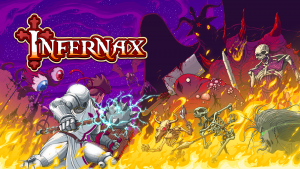
While it seems like character-action games have mostly gone out of vogue besides Platinum Games’ output, Capcom has followed up 2013’s Devil May Cry reboot with a proper sequel to the last mainline entry in the series. Although we’ve come a long way in terms of presentation and gameplay innovations since Dante’s demon-slaying began in 2001, it’s good to know that there is still a place for this kind of irreverent, silly, and thoroughly pop-punk infused deluge of viscera. In terms of aesthetic, we really learn all we need to know about this metal world of satanic beings during the introductory credit sequence. Here we see Nero, a demon slayer who was introduced in the previous entry, engage in a gratuitous slow-motion ballet of marksmanship, as he annihilates a horde of monsters to the tune of the melodramatic jam, Devil Trigger. The nonchalance and inherent comedy of his effortless display define the sense of over-the-top cool that permeates through the entire game.
The story continues the convoluted monster-slaying antics that the series is known for, picking up where DMC 4 left off. We begin with a cold-open, as an unknown demon called Urizen wreaks havoc in the middle of a city. In the ensuing fight, Dante is beaten, and Nero flees. Nero then teams up with an enigmatic demon-slayer V, and the two attempt to discover the fate of Dante and defeat Urizen. Until the end, most of the plot boils down to finding mythical McGuffins or beating up big monsters, but there is plenty of fun to be had with the outrageous tone and cornball sensibilities. While the proceedings are presented in a mostly straight-faced fashion, there are enough moments that play as cartoonish comedy that it’s very clear that the team at Capcom is self-aware about the game they’ve made. Between some of the grotesque character designs and the frequency of one-liners, it feels as though we are well-planted in B-movie territory. One of my personal favorite touches is a recurring gag where Nico, your weapons dealer, Kool Aid-mans her van through increasingly improbably scenery.
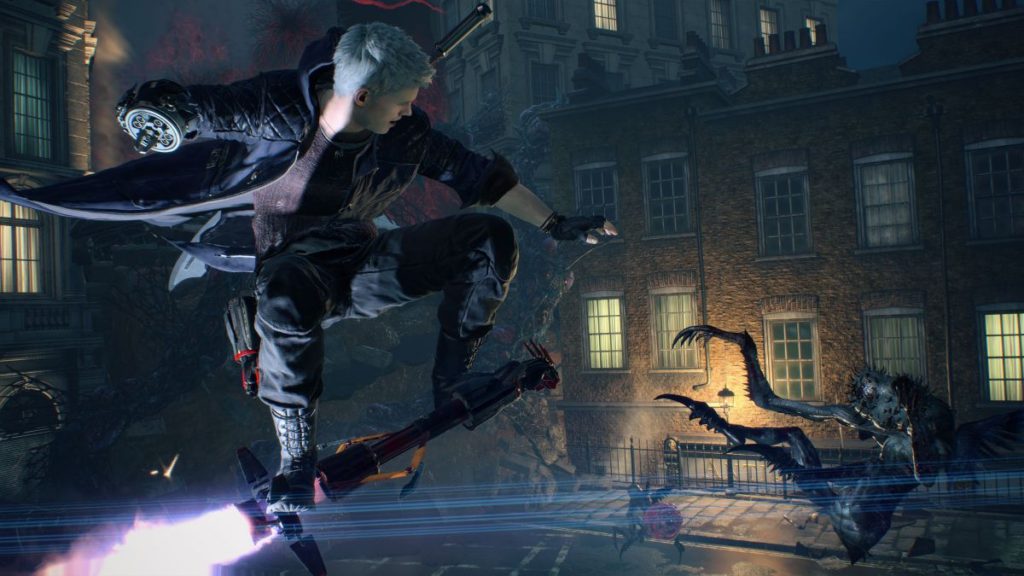
In terms of the game’s flow, things should feel very familiar to fans of character-action games. The world is mostly linear, with a couple of branches and hidden secrets. As you progress you’ll suddenly be trapped by barriers and required to kill a horde of demons before proceeding. However, where DMC 5 excels amongst its peers is in the responsiveness of its basic combat. Your characters quick slashes combine with the slick attack animations and high octane soundtrack to result in a consistently frenetic experience. While there is basically only a single button for melee attacks, you can perform a diverse array of combos based on input timing, each of which has different functions. Admittedly, I wish the defensive options were up to snuff, as with most of the characters your only option is a somewhat anemic roll that can only be performed when locked onto an opponent. When compared with Bayonetta’s Witch Time or the deflection mechanics of Sekiro, only Dante’s toolset provides satisfying methods to avoid taking damage.
But where things begin to feel unique from other character action games is in the dramatically different playstyles of the three protagonists. In the beginning, you control Nero, the most straightforward of the group. He has launcher moves, guns, and some basic combos that have different utilities. However, he also has a new mechanical arm which allows him to pull enemies towards him, an empowering addition that makes it even easier to string together long gratifying sequences. While his starting combos are fairly straightforward, through spending Red Orbs it’s possible to expand his arsenal with a plethora of additional moves. Besides allowing him to grab nearby enemies, Nero’s prosthetic arm can be swapped out for a variety of models with dramatically different powers. The best of these attachments can dramatically change the game’s flow, allowing for capabilities such as the manipulation of time or enabling instant kill moves.
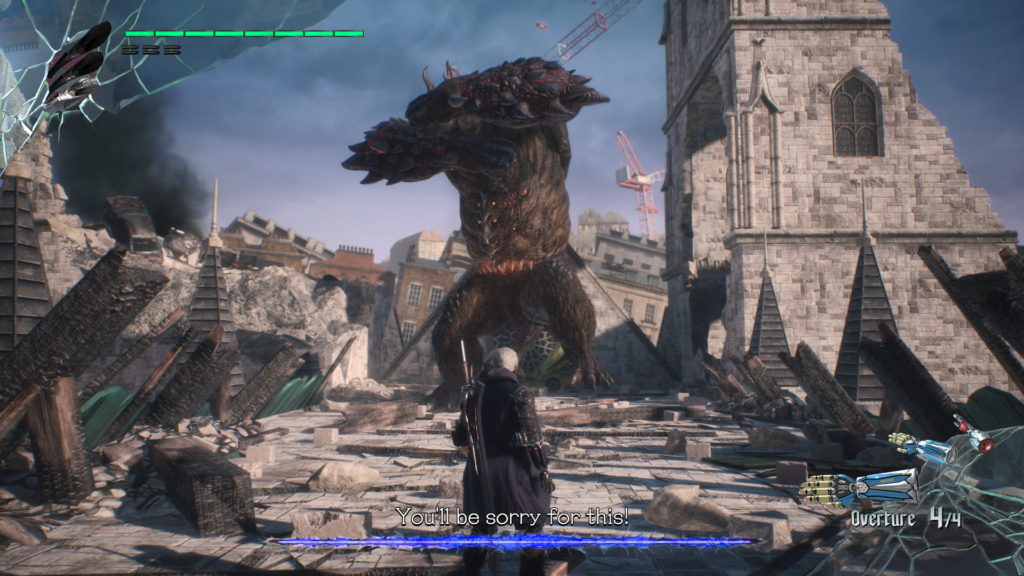
However, somewhat bafflingly, when Nero is hit by an enemy while using an arm, it is destroyed for good. In the midst of a game that is all about empowerment, this mechanic feels severely out of place and limits the capabilities of the character. You can buy more of the robotic arms using your Orbs, but this almost always feels like a waste considering all of the cool permanent upgrades you can choose instead. Additionally, it’s impossible to switch between the arms on the fly, meaning that while out in the world you can only switch by breaking one. I can understand the intent of ensuring that players don’t overuse these abilities and undermine the rest of his abilities, but something like a cooldown would have solved this problem in a much more satisfying way.
While our first protagonist’s toolset would likely be a little too basic to support a whole game, luckily there are two other characters that play dramatically differently. Series newcomer V is a poetry-spouting goth who comes across as a mix between Edgar Allen Poe and Kylo Ren. Instead of fighting enemies himself, he relies on three demons that he can summon and control remotely. One is a talking hawk that can be used for ranged attacks, another is a panther that uses melee attacks, and the third is a hulking giant which can only be summoned by expending your Devil Trigger meter.
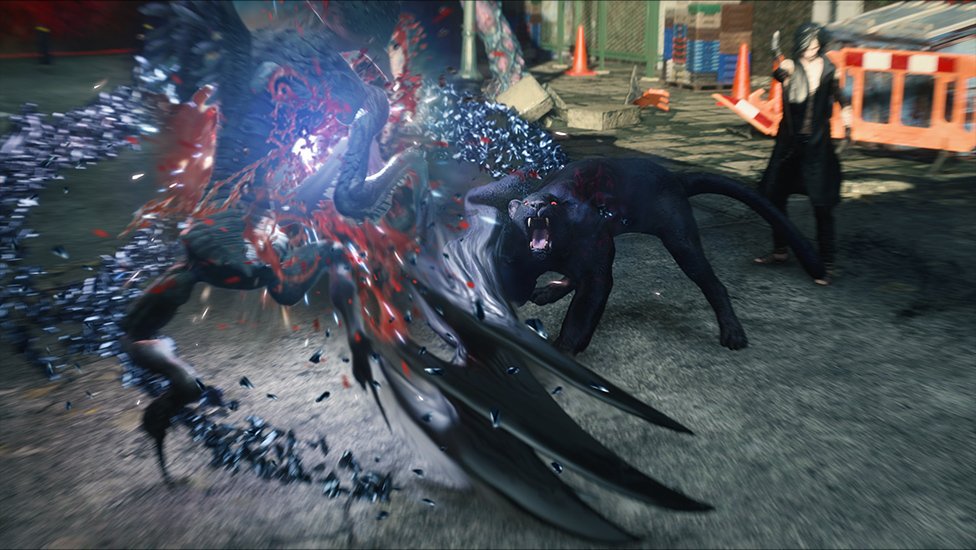
Since the demons can be controlled at the same time, this sets up for an interesting dynamic in which you can perform combos that have two or sometimes all three of your allies attacking at once. Summoning your third demon turns the tables on your foes, essentially transforming you into an overpowered final boss, equipped with exploding lasers and teleportation. When it all works as expected, orchestrating his minions makes you feel like some sort of conductor of death, but sometimes summoning your melee focused-panther to attack somewhat distant foes can feel a little inconsistent.
Finally, there’s longtime series protagonist Dante, a character who employs the “everything but the kitchen sink” approach in terms of his design. He has four different modes, all of which give him different moves and abilities. He also has a ton of different weapons with unique mechanics that are affected by the mode he is in. While he allows for the most creativity (just watch some YouTube combo videos to see examples of this), his wide range of moves naturally makes him the most complicated. By the end of the game, Dante is essentially a walking demi-god, whose multiple meters, various transformations, and huge moveset give you the opportunity to absolutely decimate your enemies. His ability to parry, perform a directional dodge, and carry out insane multi-weapon combos makes him the most engaging and challenging of the three.
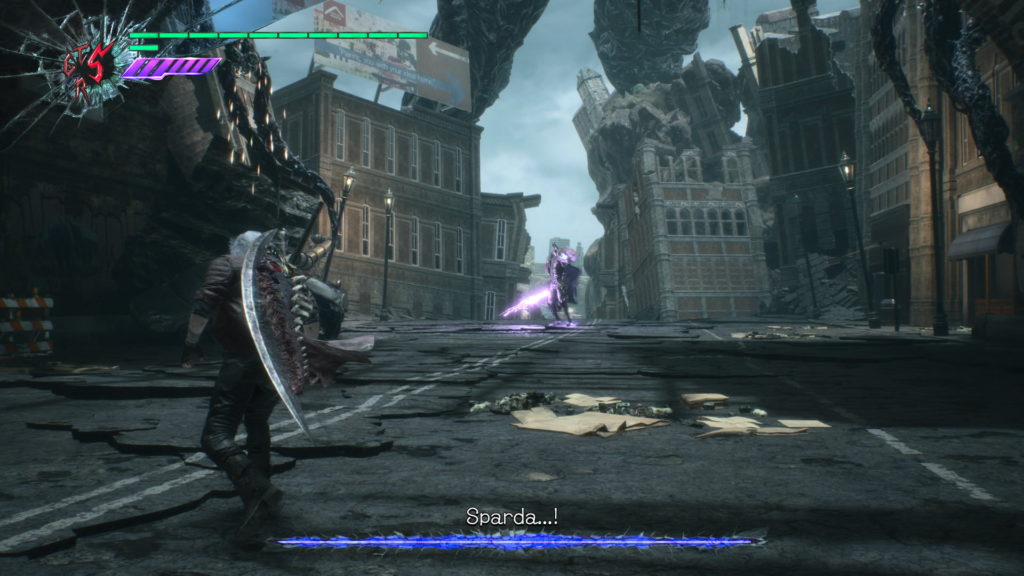
While some have justifiably complained that the constant character switching can make the upgrade progression feel a little stilted, as you have to separately unlock similar abilities for each, some of the characters switching makes sense. Playing as Nero in particular acts as a good precursor to Dante, while V feels different enough from the other two that his sequences are a suitable palette cleanser. None of the characters are perfect, but they each feel polished enough to have their own unique charms. And they are each united by the underlying smooth combat.
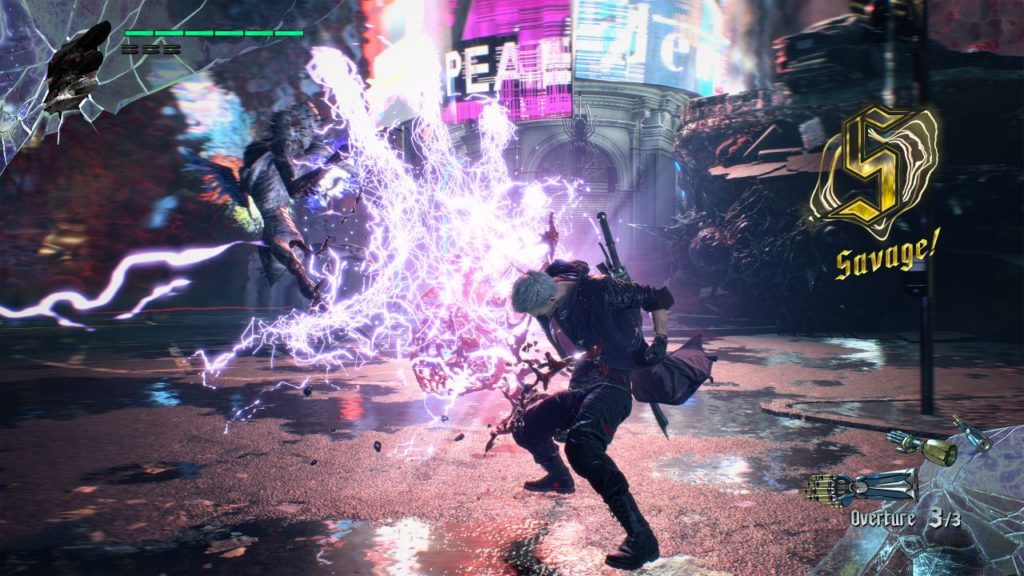
Although players can button mash, you are encouraged to diversify your attacks into flashy sequences because of the rating system. As you string together attacks without getting hit, your letter grade will slowly improve, eventually leading to a greater payout. While death is rare to come by outside of boss fights, this rating system encourages precise and creative play and creates an incentive for fully engaging with the combat. The hordes of varying demons that you encounter also encourage the usage of your many different unlockable moves and abilities. Some will spawn new foes or perform group healing, making them prime targets for quick hitting, high damage sequences, like aerial chains that allow you to isolate them. Others will attack in large groups, necessitating the use of wider range moves and combos. The bosses similarly require different strategies, from hulking behemoths to smaller more nimble foes.
Devil May Cry 5 is not an attempt to radically reinvent the series. Instead, it evolves the combat these games are known for through its trio of protagonist’s and their unique abilities. While each has their own quirks, as a whole they are the backbone for this varied and engaging character-action game. Mastery of each of their move sets isn’t required to progress, but there is ample incentive to do so because of the rating system and due how inherently enjoyable the combat is. Character-action games are few and far between these days, and DMC 5 is a shining example of why that’s so unfortunate.
Rating: 8.7/10

